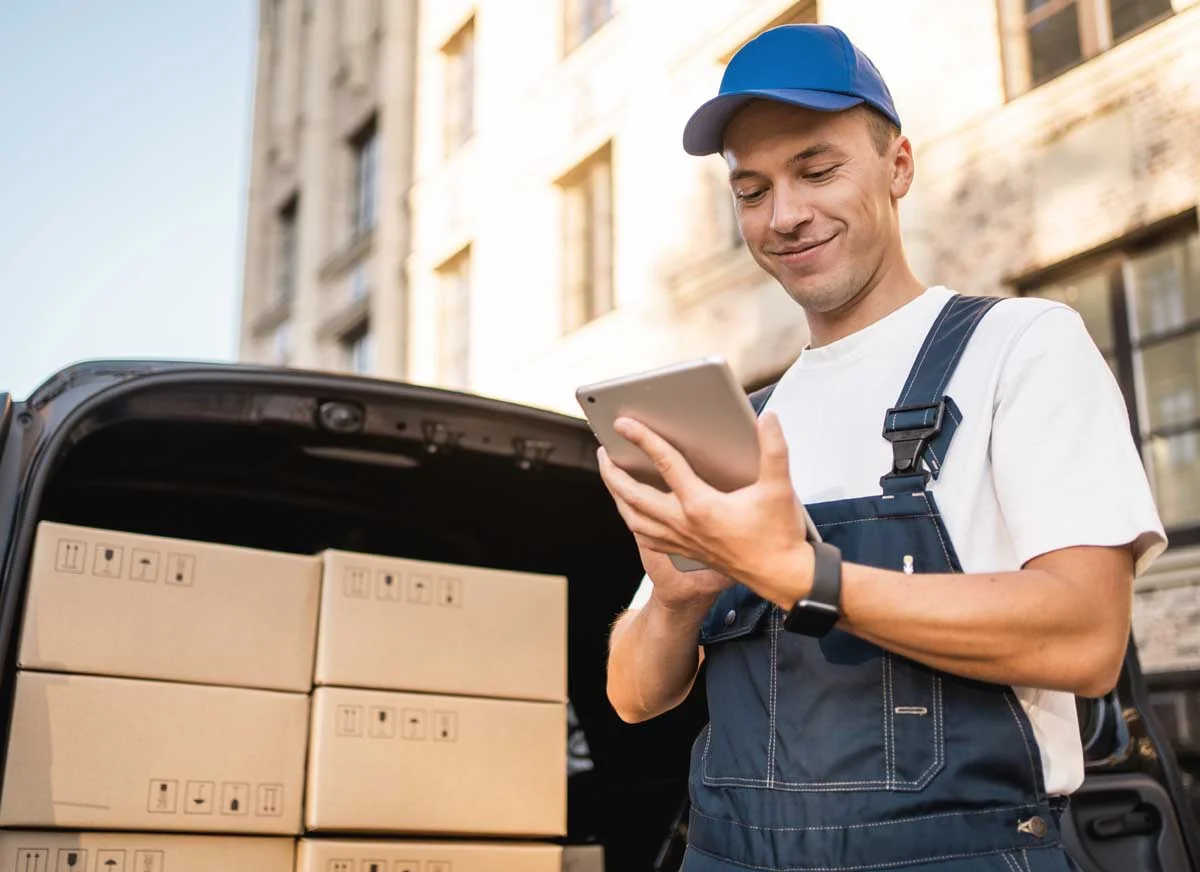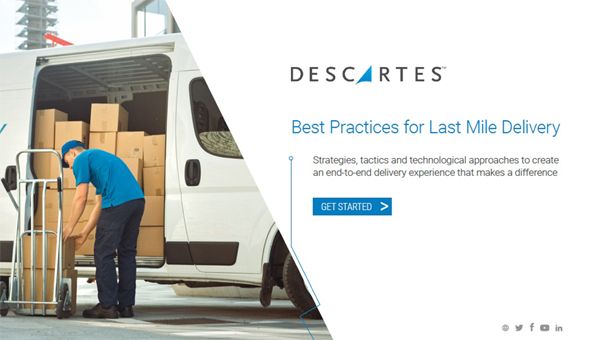Advantages of automating last mile deliveries to unlock growth and keep customers happy.

Drone deliveries and driverless vehicles are two new examples that come to mind when thinking about last-mile automation. However, these technologies are still under development and yet to be tested in the real world. In the meantime, last-mile delivery remains one of the most costly and unpredictable stages of the supply chain.
The good news is that robots aren’t the only solution for last-mile automation. There are numerous automated processes that already exist that can help retailers speed up deliveries, enhance the customer experience and choice while achieving significant cost savings.
In this post, we explore some of the last-mile automation solutions that are available now and can improve your last mile deliveries.
Route Optimisation: Maximising efficiency and reducing costs
One of the simplest ways to cut costs in last mile delivery is through route optimisation. Modern AI-driven route optimisation systems provide much more than just the quickest way to get from A to B. Based on parameters such as highway regulations, traffic conditions, customer availability, driver schedules, and vehicle capacity, they will plan the most efficient routes for multiple drop deliveries.
Thanks to developments in AI and cloud-based software, once prohibitively expensive route optimisation software is now within reach of smaller fleets. Delivery scheduling and route optimisation software can help you save money on fuel and to make efficient use of your vehicles, increasing delivery capacity without increasing the number of vehicles in your fleet, and helping each driver to make more deliveries.
Automated Notifications: Enhanced customer experience
There is a direct correlation between the use of automated notifications that keep customers updated about the status of their deliveries and a decrease in driver idle time and the number of missed deliveries as a result. Automated customer notifications eliminate the problems and time wasted with the traditional method of drivers calling or texting customers, they can be set to automatically send for a variety of reasons:
- Reminding customers a day before their delivery.
- Providing real-time updates on the delivery progress during the day of delivery.
- Alerting the customer that their delivery is imminent, or the next delivery.
- That there has been a delay and the delivery will be slightly late.
- Sending proof-of-delivery notifications once the goods have been delivered with all the relevant details including a picture of the delivery.
Customer notifications can be delivered via SMS, email, or an app, and can be triggered by system inputs such as the driver confirming the previous delivery or by automated GPS tracking. The automated hands-free customer notifications facilitate efficient communication with customers, which in turn cultivates customer satisfaction and retention, helping to drive future revenue growth.
Self-Service Systems: Empowering customers and reducing costs
An increased volume of inbound calls to customer service centres and dispatch centres is often a direct result of issues during the last mile of delivery, leading to higher costs and dissatisfied consumers. Implementing an automated self-service system that allows consumers to check on their deliveries, update appointments, and provide special instructions to drivers and enabling businesses to automate issue resolution enhances the last-mile customer experience and significantly reduces inbound call volumes and wait times. Putting the consumer in charge with a self-service platform minimises missed deliveries, boosts customer satisfaction and reduces the cost of logistics.
System Integration: Streamlining workflows for maximum efficiency
Automating processes such as appointment scheduling, inventory management, route optimisation, and customer engagement often requires the integration of multiple systems.
Selecting systems with well-documented APIs enables a smoother integration of these processes, allowing you to automate end-to-end workflows while maximising efficiency and revenue for every delivery. Customer engagement, registration, authorisation, orders, stock, payments, and route optimisation can all be managed from a single, unified platform thanks to pre-built connectors or bespoke solutions. Better transparency and less friction in operations are made possible by the elimination of paper-based systems through system integration.
Concluding the benefits of automated last mile delivery
Automating the last mile of a delivery's journey does not necessarily require a radical overhaul of your entire fleet's technology. Last-mile operations can see real gains in income and savings from minor adjustments implemented via automation technologies. You can improve your bottom line by implementing incremental changes one at a time, such as streamlining delivery procedures or giving customers more control over their experiences, however, the real benefits come when these technologies are integrated together.
Embracing last-mile automation for deliveries will unlock the potential for improved customer satisfaction, reduced costs, and increased profitability.
Contact one of our last mile experts to discuss potential solutions.


